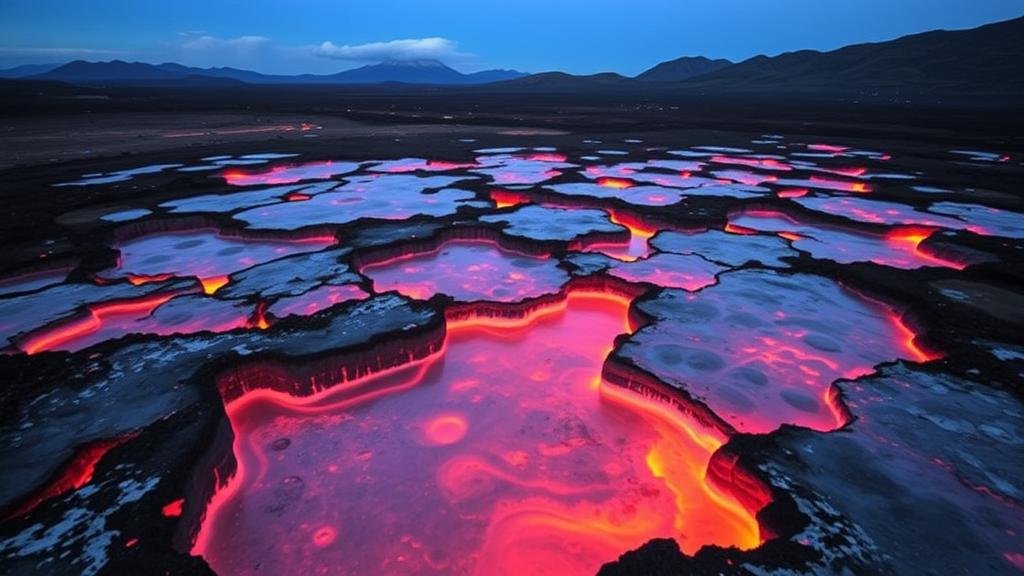Opal Fields: Discovering Fire and Ice in Ancient Volcanic Grounds
Opal Fields: Discovering Fire and Ice in Ancient Volcanic Grounds
For rockhounds and mineral collectors, opal fields are a treasure trove of geological wonders. These unique sites, often formed in ancient volcanic regions, offer a glimpse into the Earths dynamic history. This article delves into the formation, characteristics, and collection tips for opals, specifically focusing on their stunning varieties known as fire and ice opals.
The Formation of Opals
Opals are formed through a complex process of silica gel deposition and can be found in locations that were once active volcanic areas. During volcanic eruptions, silica-rich fluids seep into cavities and fissures in the rock. Over time, as the water evaporates, it leaves behind a hardened silica, known as opal.
Understanding the geological processes that lead to the formation of opals is crucial for collectors. Most opals are found in sedimentary rock, but the most coveted varieties originate from opalised volcanic ash or tuff. For example, the famed Australian opal fields in Coober Pedy and Lightning Ridge are well-known for their rich deposits formed in these conditions.
Characteristics of Fire and Ice Opals
Opals exhibit a variety of colors and patterns, with fire and ice opals being two of the most notable types.
- Fire Opals: Known for their warm hues ranging from orange to red, fire opals can even exhibit color play under certain lighting conditions. The intensity of the color is often an indicator of quality.
- Ice Opals: These opals are characterized by their translucent to transparent bodies, showcasing a play of colors that can remind one of the glimmer of ice. They often have a milky appearance and are less saturated than fire opals.
Both types of opals display a unique phenomenon known as opalescence, where their deep colors shift and change when viewed from different angles. This characteristic can be quantified; for instance, researchers have established that well-formed opals can contain up to 20% water, which contributes to their optical effects.
Tips for Collectors
For enthusiasts looking to build their opal collection, consider the following practical tips:
- Understand the Market: Familiarize yourself with reputable sources for purchasing opals, such as specialized gem shows or mineral dealers. Verify the authenticity and origin to avoid fakes.
- Invest in Proper Tools: Obtain a magnifying loupe and a refractometer to help assess the quality of potential purchases. Recognizing fire and ice opals requires careful examination.
- Join Rockhound Communities: Engaging with local or online rockhound communities can provide valuable insights and opportunities to trade or sell opals.
Real-World Applications and Market Value
Opals are not only prized by collectors but also have significant value in the gemstone market. price of opals varies widely based on factors such as color, clarity, and size.
As of the last quarter of 2023, top-quality Australian opals can command prices exceeding $1,000 per carat. According to industry reports, opal sales have seen an increase of approximately 15% year-over-year, indicating a growing appreciation for this unique gemstone.
Conclusion: The Adventure of Collecting Opals
Exploring opal fields and collecting these beautiful stones can be a rewarding experience for rockhounds and mineral enthusiasts alike. The allure of fire and ice opals, with their vibrant colors and mystical properties, continues to captivate collectors around the world.
To embark on your opal-collecting journey, remember to educate yourself on the geological features of opal formations, consider the collectible market trends, and connect with fellow collectors. Whether you are hunting for fire opals that sparkle with warmth or ice opals that glisten like frozen crystals, the adventure is sure to be one filled with discovery and excitement.


